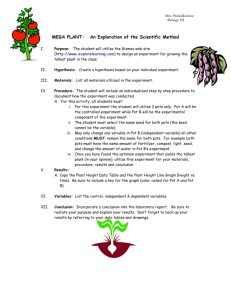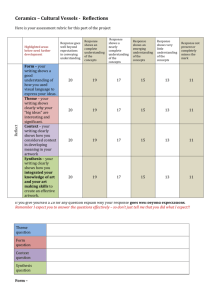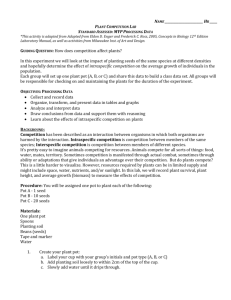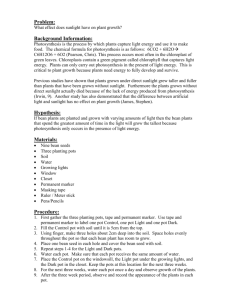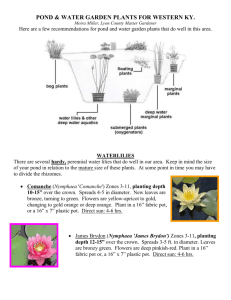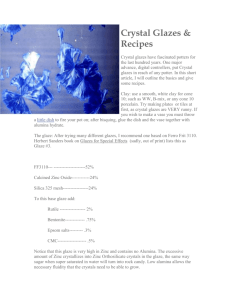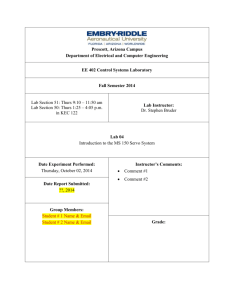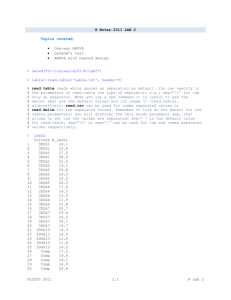Scientific Method Text
advertisement
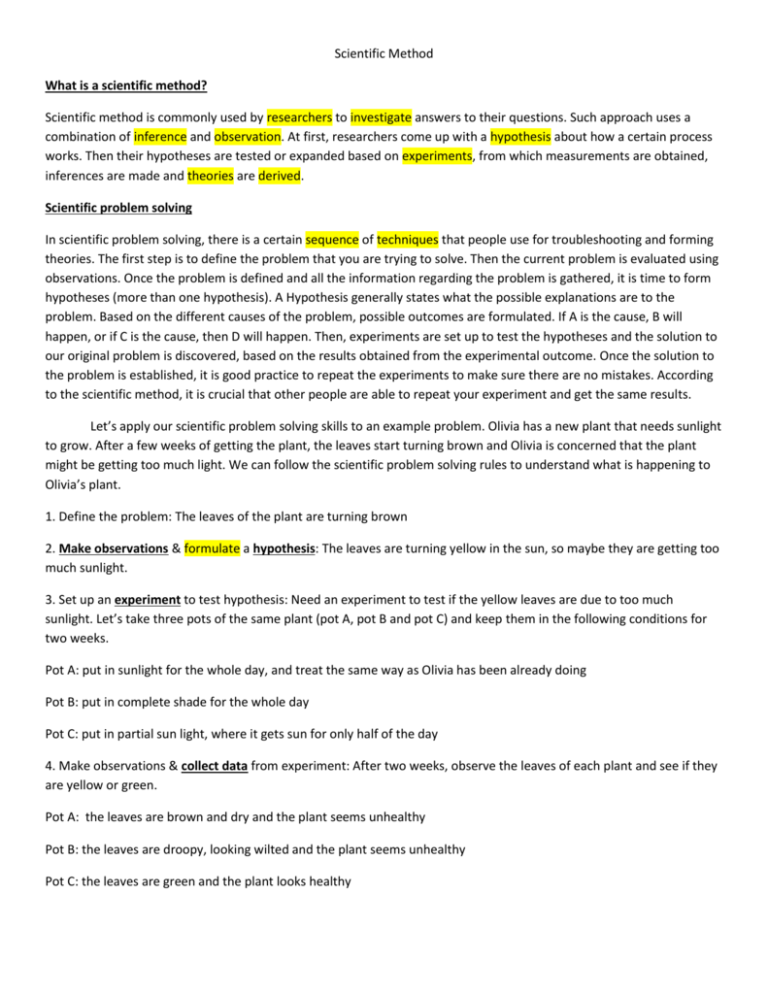
Scientific Method What is a scientific method? Scientific method is commonly used by researchers to investigate answers to their questions. Such approach uses a combination of inference and observation. At first, researchers come up with a hypothesis about how a certain process works. Then their hypotheses are tested or expanded based on experiments, from which measurements are obtained, inferences are made and theories are derived. Scientific problem solving In scientific problem solving, there is a certain sequence of techniques that people use for troubleshooting and forming theories. The first step is to define the problem that you are trying to solve. Then the current problem is evaluated using observations. Once the problem is defined and all the information regarding the problem is gathered, it is time to form hypotheses (more than one hypothesis). A Hypothesis generally states what the possible explanations are to the problem. Based on the different causes of the problem, possible outcomes are formulated. If A is the cause, B will happen, or if C is the cause, then D will happen. Then, experiments are set up to test the hypotheses and the solution to our original problem is discovered, based on the results obtained from the experimental outcome. Once the solution to the problem is established, it is good practice to repeat the experiments to make sure there are no mistakes. According to the scientific method, it is crucial that other people are able to repeat your experiment and get the same results. Let’s apply our scientific problem solving skills to an example problem. Olivia has a new plant that needs sunlight to grow. After a few weeks of getting the plant, the leaves start turning brown and Olivia is concerned that the plant might be getting too much light. We can follow the scientific problem solving rules to understand what is happening to Olivia’s plant. 1. Define the problem: The leaves of the plant are turning brown 2. Make observations & formulate a hypothesis: The leaves are turning yellow in the sun, so maybe they are getting too much sunlight. 3. Set up an experiment to test hypothesis: Need an experiment to test if the yellow leaves are due to too much sunlight. Let’s take three pots of the same plant (pot A, pot B and pot C) and keep them in the following conditions for two weeks. Pot A: put in sunlight for the whole day, and treat the same way as Olivia has been already doing Pot B: put in complete shade for the whole day Pot C: put in partial sun light, where it gets sun for only half of the day 4. Make observations & collect data from experiment: After two weeks, observe the leaves of each plant and see if they are yellow or green. Pot A: the leaves are brown and dry and the plant seems unhealthy Pot B: the leaves are droopy, looking wilted and the plant seems unhealthy Pot C: the leaves are green and the plant looks healthy 5. Repeat the experiment several times: Repeat steps 3 and 4 to make sure you get the same result each time. This ensures that the results are reproducible, there are no other external factors affecting the results and your theory has a solid basis. 6. Formulate a theory and conclude. Based on the experiments and the observations, it seems like the initial hypothesis was correct and that the leaves of Olivia’s plants are turning brown due to too much sun. Copyright 2008 InstructorWeb www.instructorweb.com
